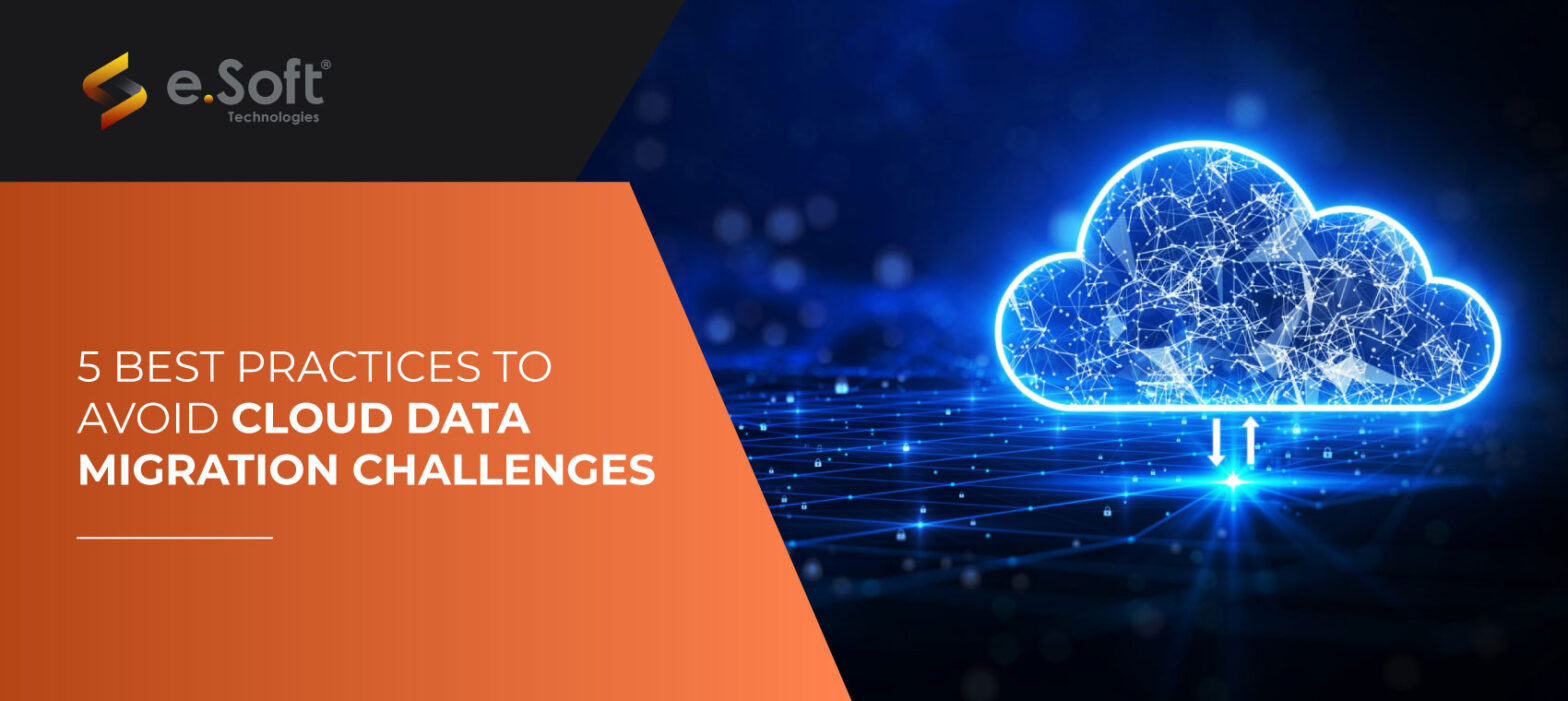
Best Practices to Avoid Cloud Data Migration Challenges
Cloud Data migration is moving your business data from an On-Premises environment to a Cloud-based platform. Although it might be a complicated process, Cloud Data Migration is a wise investment for businesses of all sizes. It offers many advantages to the businesses of various industries, such as increased agility, scalability, and cost savings.
Importance of Cloud Data Migration
Look over the statistics that highlight the importance of Cloud Data Migration:
- According to a Gartner survey, 81% of enterprises will have moved many of their workloads to the Cloud by 2025.
- Businesses that go to the Cloud can reduce their IT Solution expenses by 30% on average, says the
report by IDC. - According to a Forrester survey, 73% of companies that have migrated to the Cloud claimed increased innovation and agility.
You can collaborate with a Cloud migration partner to create a migration strategy. To minimize
the impact on your organization, they will assist & recommend the best approach to migrating your data. The advantages immediately become evident once your data is moved to the Cloud without worrying about maintaining your own servers. Additionally, you will have access to several Cloud-based applications that can help you boost customer service and expand your business.
Most Common Challenges of Cloud Data Migration:
- Lack of planning and preparation
- Underestimating the cost and complexity of the migration
- Security and compliance concerns
- Data integrity issues
- Performance degradation
The following five best practices can help you avoid these challenges and successfully migrate
data to the Cloud.1. Develop a Migration Strategy
Preparing a well-planned strategy is the first step to a successful Cloud data migration. This
strategy will include the following:- Clearly understand your business goals- Defining what you want to achieve with Cloud migration is the initial step. Once you know your goals, you can develop a migration plan that perfectly aligns with your business objectives.
- Assess your existing data environment- This includes analyzing your data and understanding your applications that rely on the data. Identifying how your existing systems are functioning with your business data helps strategize the Cloud migration process.
- Opting for a Cloud platform– Several platforms are available in the market, each with advantages and drawbacks. Deciding on a platform that fulfills your specific needs after a detailed evaluation makes a big difference. Remember that the new Cloud platform should not affect the scalability, security, and compatibility of your existing systems.
- Finalizing the Migration Plan: Here, you should outline the exact steps needed to migrate your data to the Cloud, along with the project's timeline and budget. Creating a detailed roadmap with a clear budget allocation helps you avoid falling into unexpected financial problems.
2. Understand the Cloud Migration Costs
Making a proper budget plan and being aware of the costs associated with Cloud data migration is important. The price of a Cloud data migration depends on the size and complexity of your data environment. Understand the volume (large datasets) and the complexity of your data (data structures) to estimate the costs appropriately. It is now fixing for an ideal platform according to the budget constraints. It means considering the best by looking into the immediate and long-term expenses with the chosen platform.
Additionally, make sure to investigate different cost components related to Cloud Data Migration, such as:
- 1. Data transfer costs- depend on the volume of your business data and network bandwidth while migrating the data to the Cloud.
- 2. Cloud storage costs- calculated on the amount of storage you use for your data.
- 3. Cloud computing costs- vary with the computational resources followed by the duration of usage.
- 4. Professional services costs- evaluated based on the different support services you opt for.
- Encrypting your data before migrating your business data to the Cloud is the ultimate way to protect your data. Convert your data into secure code, allowing access with only the accurate decryption keys.
- Level up you data security with Multi-Factor Authentication (MFA) & strong passwords
for all your Cloud accounts. - Use recommended practices for Cloud security. Give your users minimum access levels with the "least privilege access" to perform their tasks. Undergo systematic evaluation of your Cloud Infrastructure with regular security audits.
3. Ensure Cloud Compliance and Security
It would be best to ensure your data is secure and comply with all legal regulations to safeguard
your sensitive data.Here are some tips for ensuring Cloud compliance and security:
Conclusion:
Cloud data migration can be complex and challenging but can offer significant benefits. Following the five best practices above, you can avoid common Cloud data migration challenges and ensure a successful migration.
Stay updated with latest tech trends


 +91-22-49727454
+91-22-49727454